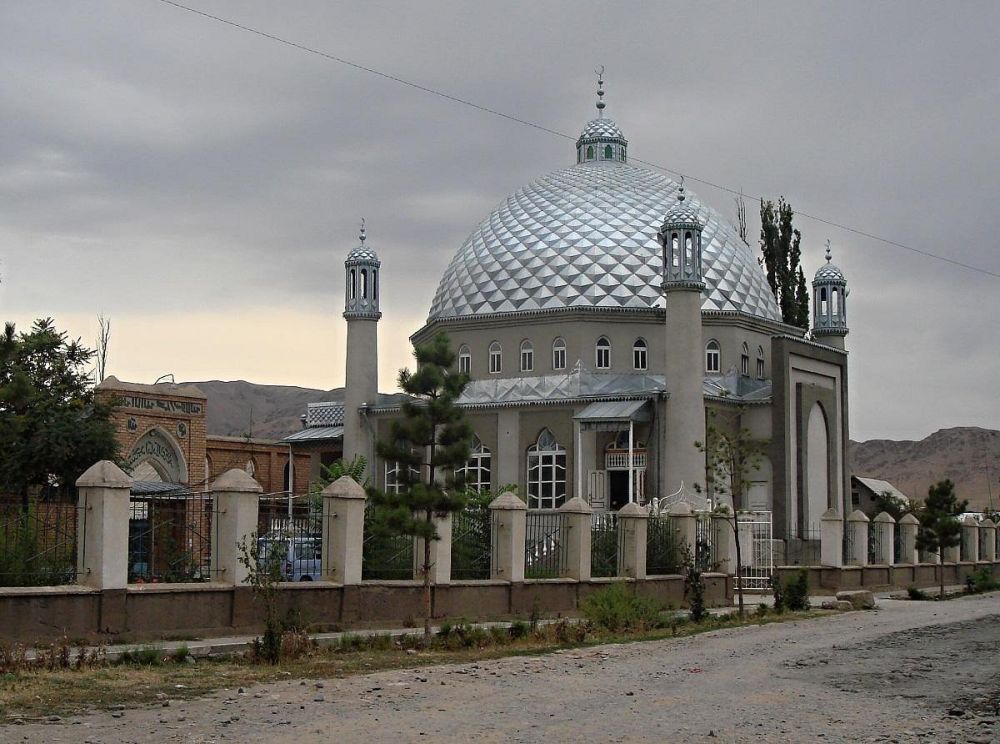

Tokmok Central Mosque stands as a symbol of religious devotion and architectural beauty in the city of Tokmok, Kyrgyzstan. This mosque is not just a place of worship but also a point of interest for visitors looking to understand the cultural and spiritual fabric of the region.
The original structure of the Tokmok Central Mosque dates back to the early 20th century when it was constructed during the Russian Empire's influence in Central Asia. The mosque is built with consideration for traditional Islamic architecture, which is infused with local Kyrgyz designs and materials, providing a unique aesthetic that reflects the region's cultural amalgamation.
Like many religious structures in the former Soviet Union, the Tokmok Central Mosque faced challenges during the Soviet era, a time when religious expression was suppressed. However, following Kyrgyzstan's independence in 1991, there was a resurgence of religious freedom, allowing the mosque to reclaim its role as a community hub for worship and social gatherings.
Understanding the mosque's importance to the local and religious community, efforts have been made to restore and maintain the structure. Today, the mosque serves the local Muslim community as a place for daily prayers, and it is also a destination for visitors wanting to experience the religious practices and learn about Islam in Kyrgyzstan.
As interest in Central Asian culture and Islamic heritage has grown, Tokmok Central Mosque has gained prominence as a cornerstone for cultural tourism. Tourists are often welcomed to witness the mosque's features, which include intricate decorative carvings, vibrant mosaics, and calligraphic art—all narrating stories of the region's historical and religious journey.
Beyond its religious role, the mosque's vicinity offers a gateway to other historical sites such as the Burana Tower, which stands testament to the ancient Silk Road that once passed through the region. This combination of attractions makes Tokmok an engaging destination for those exploring the historical interplay between trade, culture, and spirituality in Central Asia.
In recent years, with the global rise in experiential and educational travel, Kyrgyzstan, and particularly sites like the Tokmok Central Gazi, have attracted a new wave of culturally curious travelers. Eco-tourism and community-based tourism are also growing trends as visitors seek to engage with the natural landscapes and nomadic traditions of the Kyrgyz people.
The government and local stakeholders are increasingly recognizing the potential of such tourism to bolster the local economy and foster international connections. Efforts to develop infrastructure, improve visitor services, and promote sustainable practices are underway, ensuring that the unique heritage and natural beauty of the area are preserved for future generations.
Visitors to the Tokmok Central Mosque should respect local customs, dress modestly, and ideally arrange their visit outside of prayer times to avoid any disruption. The location offers a chance not only to witness an exquisite piece of architecture but to gain insight into the piety and artistic grace embedded in the Kyrgyz culture.
Whether you're a history buff, an architecture enthusiast, or a cultural explorer, the Tokmok Central Mosque in Kyrgyzstan provides a unique window into the complex tapestry of this fascinating Central Asian country's past and present.